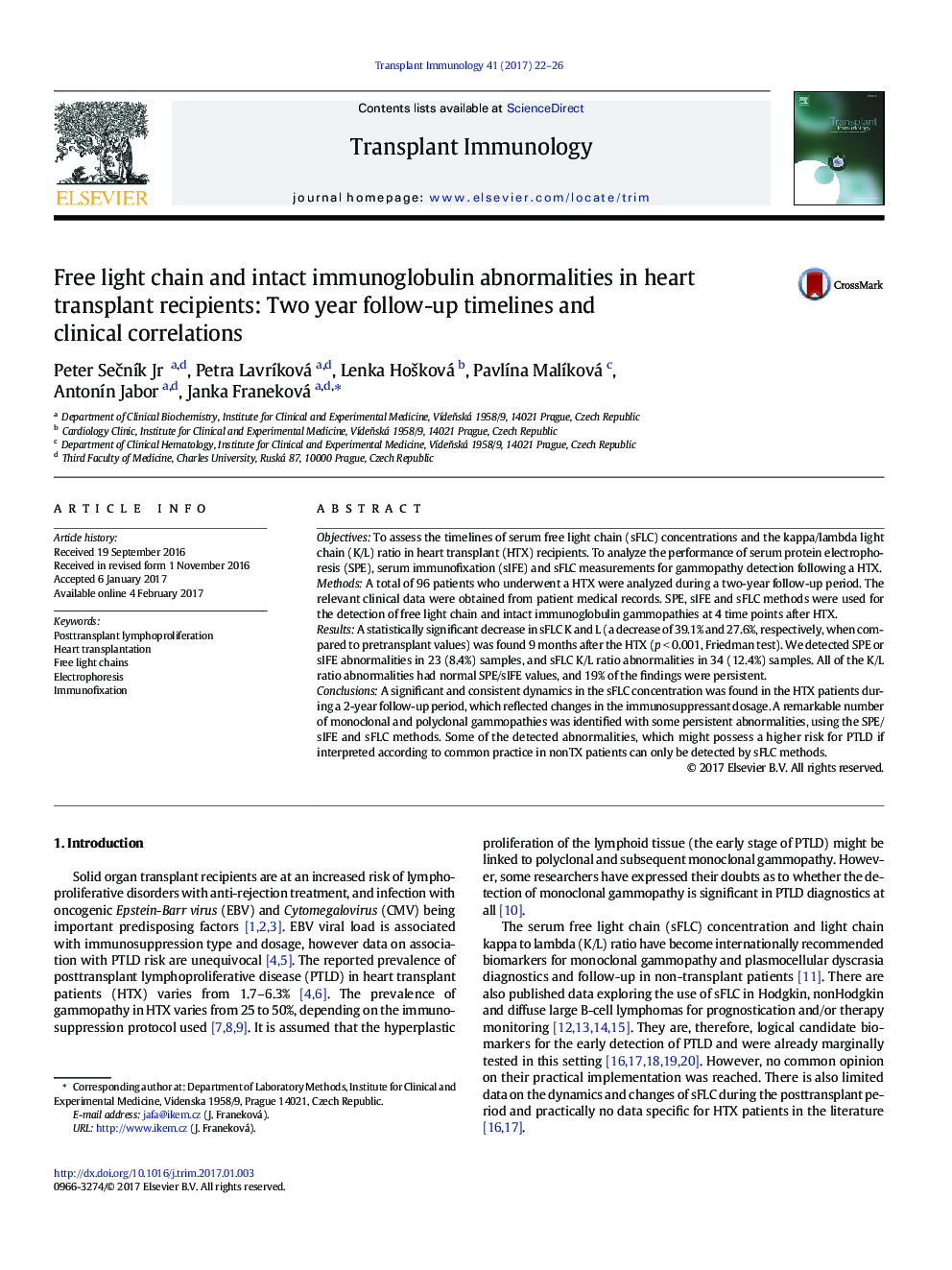| کد مقاله | کد نشریه | سال انتشار | مقاله انگلیسی | نسخه تمام متن |
|---|---|---|---|---|
| 5670458 | 1592667 | 2017 | 5 صفحه PDF | دانلود رایگان |
- The dynamics of the serum free light chain (sFLC) concentration reflects the immunosuppressant regimen.
- Intact immunoglobulin and sFLC pathologies after heart transplantation are frequent and mostly transient.
- The SPE and sFLC methods provide different diagnostic information.
- The etiology behind the sFLC pathologies is multifactorial.
- Renal impairment can cause the misinterpretation of the sFLC kappa/lambda ratio.
ObjectivesTo assess the timelines of serum free light chain (sFLC) concentrations and the kappa/lambda light chain (K/L) ratio in heart transplant (HTX) recipients. To analyze the performance of serum protein electrophoresis (SPE), serum immunofixation (sIFE) and sFLC measurements for gammopathy detection following a HTX.MethodsA total of 96 patients who underwent a HTX were analyzed during a two-year follow-up period. The relevant clinical data were obtained from patient medical records. SPE, sIFE and sFLC methods were used for the detection of free light chain and intact immunoglobulin gammopathies at 4 time points after HTX.ResultsA statistically significant decrease in sFLC K and L (a decrease of 39.1% and 27.6%, respectively, when compared to pretransplant values) was found 9 months after the HTX (p < 0.001, Friedman test). We detected SPE or sIFE abnormalities in 23 (8.4%) samples, and sFLC K/L ratio abnormalities in 34 (12.4%) samples. All of the K/L ratio abnormalities had normal SPE/sIFE values, and 19% of the findings were persistent.ConclusionsA significant and consistent dynamics in the sFLC concentration was found in the HTX patients during a 2-year follow-up period, which reflected changes in the immunosuppressant dosage. A remarkable number of monoclonal and polyclonal gammopathies was identified with some persistent abnormalities, using the SPE/sIFE and sFLC methods. Some of the detected abnormalities, which might possess a higher risk for PTLD if interpreted according to common practice in nonTX patients can only be detected by sFLC methods.
Journal: Transplant Immunology - Volume 41, March 2017, Pages 22-26
